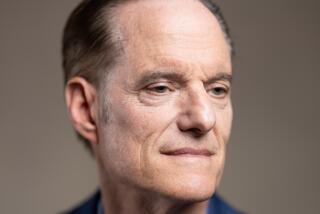In Haiti, HIV/AIDS is no longer a death sentence
BLANCHARD, HAITI â When Micheline Leon was diagnosed with HIV, her parents told her they would fit her for a coffin.
Fifteen years later, she walks around her two-room concrete house on Haitiâs central plateau, watching her four children play under the plantain trees. She looks healthy, amply filling a gray, secondhand T-shirt. Her three sons and one daughter were born after she was diagnosed. None has the virus.
âIâm not sick,â she explained patiently on a recent afternoon. âPeople call me sick but Iâm not. Iâm infected.â
In many ways the 35-year-old motherâs story is Haitiâs too. In the early 1980s, when the strange and terrifying disease showed up in the U.S. among migrants who had escaped Haitiâs dictatorship, experts thought it could wipe out a third of the countryâs population.
Instead, Haitiâs HIV infection rate stayed in the single digits, then fell.
In a wide range of interviews with doctors, patients, public health experts and others, the Associated Press found that Haitiâs success in the face of chronic political and social turmoil came because organizations cooperated and tailored programs to the countryâs specific challenges.
Much of the credit went to two pioneering nonprofit groups, Boston-based Partners in Health and Port-au-Princeâs GHESKIO, widely considered to be the worldâs oldest AIDS clinic.
âThe Haitian AIDS community feels like theyâre out in front of everyone else on this, and pretty much they are,â said Judith Timyan, senior HIV/AIDS advisor for the U.S. Agency for International Development in Haiti. âThey really do some of the best work in the world.â
Researchers say the number of infections was initially lessened by closing private blood banks, and statistically by high mortality rates -- an untreated AIDS sufferer in Haiti lives eight fewer years than an untreated American.
Well-coordinated use of AIDS drugs, education and behavioral changes such as increased condom use have kept the disease from surging back, at least for now.
Statistics are notoriously unreliable in this impoverished country and lack of infrastructure. The most telling data would be the number of new infections in a given year, but researchers say such a precise count is impossible.
Next best is to estimate the infected as a percentage of the population. From 1993 to 2003, only pregnant women were tested, and their rate of infection dropped from 6.2% to 3.1%, according to GHESKIO and national health surveys.
Researchers now test men and women aged 15 to 49, and the official rate is 2.2%, according to UNAIDS.
Thatâs still far higher than in the developed world, but itâs lower than the Bahamas, Guyana and Suriname, and much lower than sub-Saharan Africa, where the rate averages about 5% but is as high as 24% in Botswana and 33% in Swaziland.
But the crisis is far from over. In the Artibonite Valley, where Boston-based Partners in Health is setting up two clinics, the estimated infection rate is 4.5%.
Some in these remote regions still look for care from Voodoo priests, who ask for large sums of money or goods and use substances that doctors say can be poisonous.
Thanks in large part to UNAIDS, which gave Haiti its first grant in 2002, and $420 million from the U.S. Presidentâs Emergency Plan for AIDS Relief, or PEPFAR, an estimated 18,000 people are on AIDS drugs, most of them administered free through GHESKIO and PIH.
That population represents 40% of those whose white blood cell count is low enough for them to need the drugs. It is a high percentage for the developing world, but still fails to help many too remote to reach medical care or those at for-pay public clinics.
Still, Haiti has been sufficiently ahead in prevention, diagnosis and treatment that some of its programs served as models for PEPFAR, the program launched by President George W. Bush in 2003 and praised for its work in Africa.
GHESKIO co-founder Dr. Jean W. Pape was awarded the French Legion of Honor for his work, and PIHâs Paul Farmer was recently named chairman of Harvard Medical Schoolâs global health department. In May, Haiti was honored as the host of the opening ceremony of the 2009 International AIDS Candlelight Memorial.
In a country suffering from political upheaval and natural disasters, where three-quarters of the people can neither afford nor access private clinics or fee-based public hospitals, few could have imagined at the dawn of the AIDS crisis how far Haiti would come.
When some of the first confirmed cases of the strange new immune deficiency disease were found in Haitian migrants, the country was hastily and unscientifically pegged as the main breeding ground, or maybe even cause, of AIDS. Experts predicted a third of its population would be wiped out.
The U.S. Centers for Disease Control deeply offended the country by listing Haitian nationality alongside hemophilia, homosexuality and heroin use as primary risk factors -- nicknamed âthe four Hâs.â There was speculation that slum squalor or Voodoo ceremonies were responsible.
By the mid-1980s the CDCâs risk-factor list was amended, but the damage was done to Haitiâs dignity and to tourism, then its second-largest industry, which never recovered.
Yet the stigma may be what motivated Haiti to fight the disease harder, uniting squabbling officials and donors in a common cause, said Pape, a Haitian-born, Cornell-educated physician who helped found GHESKIO in May 1982.
GHESKIO was founded two months before the disease even had a name, hence its unwieldy French acronym for âHaitian Group for the Study of Kaposiâs Sarcoma and Opportunistic Infections.â
Speaking in an office filled with health studies and signed photos from U.S. presidents, Pape said efforts to close unregulated blood banks, treat the sick and reducing mother-to-child transmissions helped curb the epidemic.
Partners in Health was founded in 1983, by two Haitians and two Americans including Farmer, as a small clinic to treat infected people in the desperately poor hillside community of Cange.
Its âaccompagnateurâ program, in which local workers, including HIV patients, are paid to help the newly diagnosed adhere to physically taxing medication regimens and prevention measures, has been duplicated in Africa. So has GHESKIOâs work, such as distributing phone cards to patients to keep in closer touch with their doctors.
Obner Saint-Valain is an accompagnateur -- community health worker -- who looks over seven patients, including Marie-Lourdes Pierre, a blind 55-year-old woman who has been HIV-positive since 1999. He is paid $54 a month.
âIf youâre giving medication to a patient, you canât be scared of them. If the patient becomes worse, itâs me that picks them up and puts them in a car to the hospital,â he said.
Many of Haitiâs 9 million people cannot afford care in hospitals that require them to provide everything from medicine to latex gloves for their doctors, HIV patients get cutting-edge treatments for free.
Meanwhile, education campaigns spread the word on prevention measures. More than 51 million free condoms have been shipped to the country of since 2004 and are advertised everywhere on street murals and corner store signs.
âMore Haitians know about modes of transmission than high school students in the U.S.,â Pape said.
It was in 1994 that Micheline Leon made the 20-mile trek from Blanchard over crumbling roads to the stone-walled campus of Zanmi Lasante, the Creole name and flagship operation of Partners in Health.
Something felt wrong with her pregnancy. The baby was fine, but Leon tested positive in the HIV test given to all expectant mothers.
âMy family lost hope. They thought I was already gone.â
Through care, counseling and a lot of social assistance -- Partners in Health also helped build her tin-roofed, concrete house -- Leon survived. She is also a paid PIH accompagnateur, working mostly with tuberculosis patients.
Pape envisions a Haiti where the prevalence rate will dip below 1%. Timyan of USAID believes the rate has essentially stabilized.
Leonâs parents never did buy that coffin. For her, fear and shame have been replaced with pride and confidence.
âIâm not scared anymore.â
More to Read
Sign up for Essential California
The most important California stories and recommendations in your inbox every morning.
You may occasionally receive promotional content from the Los Angeles Times.










